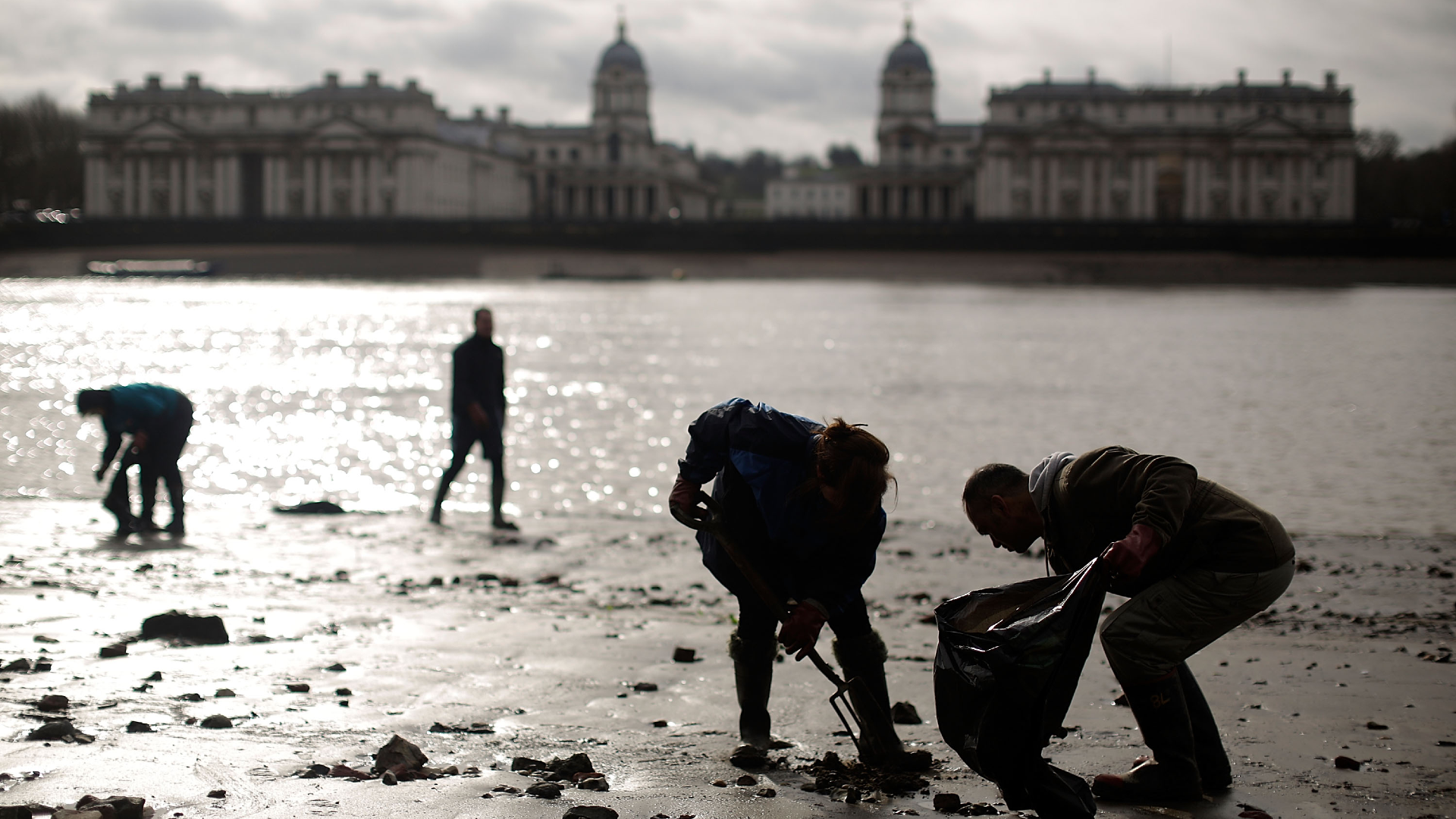A recent study reveals that the River Thames has harbored human corpses since at least the Bronze Age, shedding light on ancient rituals and mysteries. Researchers are investigating why these bodies were deposited, exploring theories ranging from ritual practices to violent conflicts.
People have been dumping corpses into the Thames since at least the Bronze Age, study finds

Key Takeaways:
- Hundreds of human bones have been found in the River Thames over the past two centuries.
- Most remains date back to the Bronze and Iron Ages, indicating significant activity during these periods.
- Radiocarbon dating shows a span of nearly 6,000 years for these human remains.
- Researchers propose theories including ritual deposits, violent encounters, or natural erosion of burial sites.
- Analysis of skeletal injuries is forthcoming, potentially revealing patterns of ancient violence.
Unearthing Ancient Secrets from the Thames
For centuries, the River Thames has been a lifeline for Londoners—a source of commerce, inspiration, and identity. But beneath its murky waters lies a deeper, more mysterious history. A recent study has unveiled that the Thames has been a repository for human corpses since at least the Bronze Age, uncovering secrets that span nearly 6,000 years.
Discovery of Centuries-Old Remains
Over the past two centuries, hundreds of human bones have been dredged from the riverbed of the Thames. Researchers, intrigued by these findings, conducted radiocarbon dating on 30 skeletons, combining this data with 31 previous dates. The results, published in the journal Antiquity on January 28, reveal that the remains date from 4000 B.C. to A.D. 1800. Notably, a significant concentration of these bones originates from the Bronze Age (2300 to 800 B.C.) and the Iron Age (800 B.C. to A.D. 43).
“Most people—including Londoners!—are quite taken aback to hear that hundreds of human bones have come from the River Thames,” said Nichola Arthur, the study’s lead author and a curator at the Natural History Museum in London. “The Thames human bones represent a uniquely large assemblage.”
Investigating the Why
The presence of such an extensive collection of human remains raises a compelling question: Why were these bodies deposited in the Thames?
Ritual Practices
One prevailing theory suggests that the river served as a site for ritualistic deposits. Arthur notes that in prehistoric northwest Europe, it’s not uncommon to find human remains in “water places,” hinting at intentional offerings or ceremonies. “We can now say with confidence that these don’t appear to just be bones that have steadily accumulated in the river through time,” she explained. “There really was something significant going on in the Bronze and Iron Ages.”
Violent Encounters
Another possibility points to ancient conflicts. Chris Knüsel, a bioarchaeologist at the University of Bordeaux, suggests that the remains might be the result of violent encounters over control of the vital river resources. “Violence is a particularly common theme for later prehistoric human remains from watery places,” he told Live Science . This theory is bolstered by patterns of skeletal trauma observed on some bones.
Natural Erosion
Alternatively, some experts propose that the bodies could have entered the river due to the erosion of riverbank burials or accidental drownings. However, the concentration of remains from specific historical periods challenges this notion.
Looking Ahead: Unraveling the Mystery
The next phase of research focuses on analyzing the injuries found on the bones. “Exploring exactly how the Thames human remains might fit into these practices is one of the next exciting steps of the project,” Arthur remarked. This analysis may shed light on whether the individuals met violent ends or were part of ceremonial practices.
An Enduring Enigma
While the Thames continues to guard many of its secrets, each discovery brings us closer to understanding the lives and customs of ancient societies that once thrived along its banks. The river, a constant in London’s ever-evolving landscape, serves as a bridge between the present and a past that’s still being unraveled.
As research progresses, the mystery of the Thames’ ancient corpses invites both scholars and the public to ponder the rituals, conflicts, and stories submerged beneath the waters—a testament to the river’s enduring role in human history.











